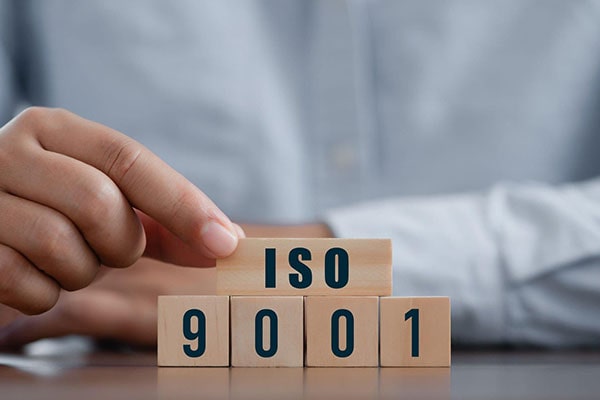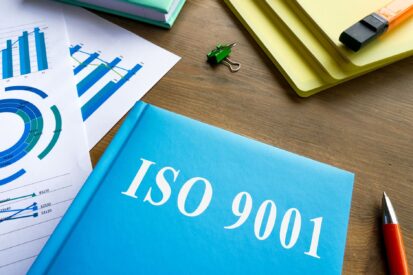As a business owner, it may seem that heaps of complex changes come with every ISO update, making it challenging to remain compliant. However, you will be pleasantly surprised to discover that the ISO 9001:2015 standard was created to be user-friendly and straightforward.
Annex SL is a foundational component designed with a simplicity that will help quickly implement a Quality Management System (QMS). In this article, we will discuss why the Annex SL is important.
What is Annex SL?
Annex SL is a foundational component that addresses the need to create a high-level structure in the standards. This ten-rung format is aimed to improve readability and understanding, especially for business owners and novice quality management enthusiasts. The goal of this format is to create consistency and alignment between various ISO management standards.

The benefit of creating consistency and alignment between various management systems is that it will create efficiency when an organisation integrates two or more standards. Additionally, it will be helpful to all the technical committees working on standards because this harmonised approach will streamline periodic revisions. All standards which are based on the Annex SL will show the following common elements:
- Standard terms and standard core definitions,
- Identical text for standard requirements,
- Same title for clauses,
- Identical numbering system.
How will you benefit from Annex SL?
There are two circumstances where you can benefit from Annex SL. In the first circumstance, you will benefit when you implement or audit more than one management standard within your organisation. The second scenario is when any of the implemented standards are revised. Before establishing the High-Level Structure (HLS), combining ISO 9001 with another standard was inefficient or extremely difficult. Even though many of the requirements were common, there was a lack of consistency in the terms, structure and wording before the establishment of Annex SL, which led to complicated commonalities, duplication, redundant work processes and inefficient auditing.

Similarly, when a standard is periodically revised, there is usually the creation of a new structure and body, making it difficult for business owners to detect material changes when updating their management system.
The benefit of Annex SL is that it has streamlined and improved the combination of standards and revision procedures.
Annex SL for ISO 9001
Taking the example of ISO 9001, the clauses are laid out as follows:
- Clause 0: Introduction to the quality management system
- Clause 1: Scope of the QMS
- Clause 2: Normative references
- Clause 3: Terms and definitions
- Clause 4: Context of the organisation
- Clause 5: Leadership
- Clause 6: Planning
- Clause 7: Support
- Clause 8: Operation
- Clause 9: Performance evaluation
- Clause 10: Improvement
Criticism for Annex SL
There is a lot of criticism related to developing this high-level structure. First and foremost, it is often criticised for stiffening innovation. Since its initial publication, all revised standards today must fall under the framework of the high-level structure. Now, for organisations that have already implemented the earlier versions of the standard, it is not feasible to abolish certain management system parts or elements. Taking the example of ISO 9001, for an organisation that has implemented the earlier version, it would not be possible to eliminate the requirement for a quality policy as per clause 5.2.

Some critics have suggested that there are flaws within the Annex SL, and due to the universal application, these flaws have now spread to every management system. An excellent example of such a flaw is the term “documented information,” which is confusing, as it is utilised to refer to documents and records.
In addition, there is another problem with Annex SL that it can create requirements that add no actual value to the organisation. Although this issue is not concerned with the implementation of ISO 9001, since the QMS dictates the development of Annex SL, the requirements for defining management system processes and their interaction as per clause 4.4 does not make sense for ISO 14001. The ISO 14001 standard focuses on environmental performance by creating an Environmental Management System (EMS) and defining management system processes, making their interactions seem redundant.
Which standard uses Annex SL?
Some examples of standards that are utilised in Annex SL include:
- ISO 9001:2015- Quality management system
- ISO 21001:2018- Management system for educational organisations
- ISO 14001:2015- Environmental management system
- ISO 27001:2013- Information security management system
- ISO 22000:2018- Food safety management system
- ISO 45001:2018- Occupational health and safety management system
- ISO 50001:2018- Energy management system
- ISO 46001:2019- Water efficiency management system
- ISO 55001:2015- Asset management system

Conclusion
Annex SL is a standardised format currently utilised in all ISO management systems. The purpose of creating this format was to enhance consistency and alignment between various ISO management standards so that it becomes easier to integrate two or more standards.








Users Comments
Get a
Quote